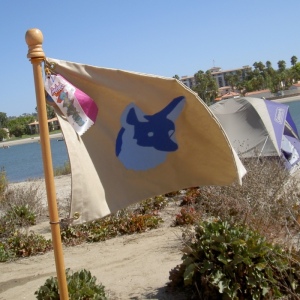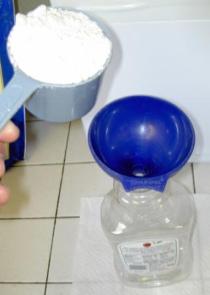Welcome to The Trainer’s Corner June 22, 2010
Posted by jeffcummings in Uncategorized.comments closed
Hello fellow Scouters,
Welcome to The Trainer’s Corner! The Trainer’s Corner was a series of Cub Scout leader helps that ran from October 2008 to June 2010. As you navigate through the various pages and postings, hopefully you will find ideas, thoughts, and examples that will help you run a better Cub Scout program.
Good luck with your program!
“Keep it simple, make it fun!”
In Scouting,
– Scouter Jeff <><
—
Questions? E-mail me at thetrainerscorner@gmail.com
—
Webelos to Scout Transition – The Goal June 9, 2010
Posted by jeffcummings in Uncategorized.Tags: Boy Scouts, Cub Scouts, Scout Leaders, Training, Webelos, Webelos to Scout Transition
1 comment so far
Hello fellow Scouters,
This is the seventh and will be the last in a series I’ve written on  Webelos to Scout transition. This time we are going to look at what the goal of the Webelos to Scout process should be.
Webelos to Scout transition. This time we are going to look at what the goal of the Webelos to Scout process should be.
Too often I hear people say that the goal of the Webelos to Scout transition process should be getting a boy to join a troop. This can be A goal, but I feel this falls short of what we want from our Webelos Scout. We are not selling cars, where we want someone to sign the dotted line and then the deal is done. If we think of the goal as getting a boy to join a troop, we will design our recruiting tools for this. Instead, we should define the goal as getting the boy to find a troop that fits him and his family, where he will stay in and find success.
Each troop is unique. Some are fully boy-lead. Some have more adult involvement. Some are high-adventure oriented. Some might do more car camping. And some might be more community-service oriented, with a little less focus on the outdoors. And all of these are the correct way to run a troop. We shouldn’t fall into the trap of saying a troop should be this way, or a troop should be that way. If a troop has a stable or growing membership, and the boys are having fun while their character is being developed, then that troop is doing the right thing.
So when working towards our Webelos to Scout transition goal, we should look at which type of troop fits the boy and his family before he joins. The boy and his family should look for a troop that fits their family needs and their idea of what a troop should be. This is why visiting multiple troops as a Webelos is so vital. And I would charge all Webelos den leaders to let your parents know that the choice of a troop is a family decision. This is the time where your den might go their separate ways, and that’s OK. Although it’s great when boys go from a Webelos den to the same troop, sometimes it’s best in the long run for a Scout to go to a separate troop than some in his den.
—
We should want more from the Webelos to Scout transition process than getting a boy to join a troop. The Webelos to Scout transition process should be about getting the boy to join a troop that fits in with his and his family’s idea of what a troop should be and where he will get fully engaged in that troop. We want a boy to find the right troop for him and his family, so he will join and stay in and enjoy all that Boy Scouts has to offer.
—
Previous Webelos to Scout transition postings can be found by clicking the “Webelos to Scout” page above.
—
In Scouting,
– Scouter Jeff <><
Easy Delicious Dutch Oven Burritos May 24, 2010
Posted by jeffcummings in Uncategorized.Tags: Boy Scouts, Campouts, Cub Scouts, Dutch Oven Recipes, Dutch Ovens, Outdoors, Outings, Scout Leaders, Training, Webelos
3 comments
Hello fellow Scouters,
We had a family in my former pack that were some of the nicest  people you could meet. Along with being wonderful people, they were awesome outdoor cooks! They were so good that I would do whatever I could to make sure my campsite was next to theirs, so I could mooch food. And yes, it got so bad that I even abused my position as Outdoors Chair to get my campsite next to their campsite. I’m not proud of it, but I’d do it again! We would exchange food when we camped, but I have a feeling they got the short end of the deal, as their food was so much better than my cooking.
people you could meet. Along with being wonderful people, they were awesome outdoor cooks! They were so good that I would do whatever I could to make sure my campsite was next to theirs, so I could mooch food. And yes, it got so bad that I even abused my position as Outdoors Chair to get my campsite next to their campsite. I’m not proud of it, but I’d do it again! We would exchange food when we camped, but I have a feeling they got the short end of the deal, as their food was so much better than my cooking.
One of my favorite recipes they made was their Easy Dutch Oven Burritos. This recipe was so easy to make, and tasted so, so good. I am so glad they gave this recipe to me! It’s so good, in fact, that we make it at home (we half the recipe listed below).
The recipe below will serve around 10 – 12, making 20 – 22 burritos (depending on how much you stuff them). A 10″ or 12″ Dutch oven would work for this recipe.
- Ingredients
- 1lb bulk sausage
- 1lb ground beef
- Pinch of salt
- 2 medium onions (sliced fine)
- 1 bell pepper (sliced)
- 2 cans pinto or black beans (drained)
- 2 small cans chicken broth
- 1 package taco seasoning mix
- 1 can whole kernel corn (drained)
- 3 cups (1 small box) Minute Rice (white or brown)
- Vegetable oil (a couple of tablespoons)
- 20 – 22 flour tortillas
- Shredded cheese
- Your favorite salsa
- Optional: sliced avocado and cilantro
If you have a legless Dutch oven like I do, you can do this on your stove. Or you can prepare around 9 to 10 coals and do this in your Dutch oven stand (and have a few extra coals ready if needed). You can even cook this on a small stock pot on your stove – but where’s the fun in that 🙂
Spread out a little oil in the bottom of your hot Dutch oven. Add the onion and sweat them until they are translucent. Add the meat and a pinch or two of salt and chop/crumble the meat with your spoon and brown the meat, stirring as needed. As the meat is just about finished, add the bell peppers. If your beef or sausage produces a lot of juice, you can use some tongs and paper towels to sop up some of this (this isn’t required, though).
When the meat is cooked add the beans, chicken broth, taco seasoning, and the corn. Bring to a high simmer for 5 minutes, stirring occasionally (add a few more coals if you’re not getting a good simmer). After 5 minutes of simmering, stir in the rice, cover with the lid, and remove from heat. Let sit around 10 minutes, or until the rice is soft and most of the moisture is absorbed. (If it’s cold or windy, add a couple of coals on the top and bottom to keep the Dutch oven warm).
Once the filling is done and the moisture has been absorbed, spoon on to your tortilla, and add some cheese and your favorite salsa. If you want extra goodness, add slices of avocado or cilantro, or whatever else you like to add to your burritos (sour cream, olives, or whatever gives you your perfect burrito!)
[Please note that the image I used for this blog post was an image I pulled from the Internet, and not fully reflective of this recipes’ results]
—
This is not some generic recipe out of a book that I’ve posted. This is one I’ve eaten at campouts, and I’ve cooked at home. And it’s so good that even my teenage picky eater loves it! Try it and you’ll see why I picked campsites close to my friends!
—
Enjoy!
In Scouting,
– Scouter Jeff <><
The Toilet Paper Game May 10, 2010
Posted by jeffcummings in Uncategorized.Tags: Boy Scouts, Cub Scouts, Den Games, Games, Meeting Helps, Outdoors, Scout Leaders, Training, Webelos
1 comment so far
Hello fellow Scouters,
Games are a vital part of your Scouting program, and some of the  best games are the ones that take very little setup or supplies to do. If you have enough Scouts, and a couple of rolls of new toilet paper, you have what you need for a fun game!
best games are the ones that take very little setup or supplies to do. If you have enough Scouts, and a couple of rolls of new toilet paper, you have what you need for a fun game!
We played the toilet paper game a few years ago when my den were Webelos. Due to the skill level required, I would keep this game to Webelos and above.
The rules are simple. Select teams of 3 or 4 Scouts. Have the Scouts stand back-to-back-to-back (basically so their shoulders are touching). One Scout gets the roll of toilet paper, and he has to press the beginning of the roll against his stomach and pass the roll to the Scout on one side. Then that Scout takes the roll of toilet paper, and wraps it around his stomach, and hands it to the next Scout. The toilet paper is then passed from Scout to Scout, unraveling the paper and wrapping it around the team. If the toilet paper breaks, they have to hold the broken ends against themselves and wrap the paper around the team so that it covers this break and holds the wrapping in place, and then continue to wrap. The winning team is the first to hold up the empty roll with the paper wrapped around themselves.
The main challenges are keeping the toilet paper from breaking while passing it and not dropping the roll. If the team drops their roll, then they have to figure out a way to pick up the roll without breaking the wrap around themselves.
while passing it and not dropping the roll. If the team drops their roll, then they have to figure out a way to pick up the roll without breaking the wrap around themselves.
Not only does this make for a fun game, but imagine when you hold up the bag and announce “and the main equipment for this game is…” then bring out the package of toilet paper! When I did this in my den, the boys were laughing out loud when they saw this (and so were the parents). I had 8 boys show up to that meeting, so I had two teams of 4 boys. But best of all, I had 4 parents stay for that meeting. Guess who was team 3? Right! I talked the parents into playing too! They had a lot of fun, and finished their roll first, but since they had more girth than the boys, I disallowed their score and only took the winning boy team. But all had a blast!
—
So if you are looking for a fun game for your older Scouts, consider the toilet paper game. It’s a fun game that they will talk about for quite a while!
In Scouting,
– Scouter Jeff <><
Lemon and Chopstick Relay Game May 3, 2010
Posted by jeffcummings in Uncategorized.Tags: Boy Scouts, Cub Scouts, Den Games, Games, Meeting Helps, Outdoors, Scout Leaders, Training, Webelos
1 comment so far
Hello fellow Scouters,
It’s so important to have a game anytime you have a den meeting. When I was a Cub Scout den leader, I loved relay games. You can make almost anything a relay game. A balloon that doesn’t touch the ground, an oversized shirt pulled from one Scout to the other (with both Scouts locking hands), balancing any item that will fit on a spoon, taking a bucket of water and a spoon and filling up a cup at the other end, the sweep potato game, etc. You get the idea – as long as you have enough Scouts, a level surface, and you match the relay game to their skill level, you can have a fun time.
When I was a Cub Scout den leader, I loved relay games. You can make almost anything a relay game. A balloon that doesn’t touch the ground, an oversized shirt pulled from one Scout to the other (with both Scouts locking hands), balancing any item that will fit on a spoon, taking a bucket of water and a spoon and filling up a cup at the other end, the sweep potato game, etc. You get the idea – as long as you have enough Scouts, a level surface, and you match the relay game to their skill level, you can have a fun time.
One of my favorite relay games was the chopstick and lemon game. The equipment consisted of one lemon for each team (all lemons should be similar in size), one chopstick for each team (plus some extra chopsticks as back ups), and something to mark off your start and finish lines and something to separate the “lanes” of the relay (blue painter’s tape works well, or you could use orange sports cones). It’s always good to have a couple of parents volunteer to be line judges. The game play is easy – the boys divide into teams, get in a line, and try to roll the lemon from start to finish while staying in their lane. And they are not allowed to touch the lemon with anything except the chopstick. Since the lemon is oval, it doesn’t roll well, so that adds a lot of the fun to the game (so make sure you get really oval lemons!).
As far as the relay goes, you can split the team up and have some  boys at each end of the lane, and hand off the chopstick (which works well if you have a decent number of boys in a team). Or if you don’t have a lot of boys on each team, you can have the boy run from one end of the lane back to the beginning, then hand off the chopstick to the next in line to repeat.
boys at each end of the lane, and hand off the chopstick (which works well if you have a decent number of boys in a team). Or if you don’t have a lot of boys on each team, you can have the boy run from one end of the lane back to the beginning, then hand off the chopstick to the next in line to repeat.
There are a lot of leaders that don’t like competition games, but I always liked to have games that had a winner. The boys seemed to enjoy the games more when there was something to win (I never gave prizes, though. It was all about bragging rights). To keep things somewhat fair, I usually chose the teams, and if there was one Scout who had a particularly difficult time with the skill level of the relay, I’d rotate the teams after a round so that everyone had a chance of being on a winning team. But this is how it worked for my dens. Each den has a unique make up, and what will work for one den might not work well in another.
—
Cub Scouting should be fun, and a great way to have fun is playing games. Relay games are a great way to have fun and burn energy off at a meeting. Plus, they can be thrown together with very little planning. You can even keep some relay supplies in your game backpack.
If you need a game for a meeting this week, raid your kitchen and see if you have a lemon and a chopstick. Then you’re all set for a fun game!
—
If you have a favorite relay game, please leave them in the comments so others can try the game at their den meeting.
In Scouting,
– Scouter Jeff <><
Feeling Burned Out? Listen To Your High School Chemistry Teacher April 26, 2010
Posted by jeffcummings in Uncategorized.Tags: Boy Scouts, Burnout, Cub Scouts, Scout Leaders, Training, Webelos
add a comment
Hello fellow Scouters,
I was recently talking with a great Scout leader, and we were discussing something we all deal with: how to keep ourselves from taking too much on as an active Scout leader. As we discussed how important it is to balance getting things done in our unit without taking everything on ourselves, for some unknown reason I was brought way back to my High School chemistry class.
discussing something we all deal with: how to keep ourselves from taking too much on as an active Scout leader. As we discussed how important it is to balance getting things done in our unit without taking everything on ourselves, for some unknown reason I was brought way back to my High School chemistry class.
If you remember from your High School chemistry class, one of the properties of a gas is that it expands to fill whatever space is available. And the duties and responsibilities of being a Scout leader remind me of this – they will expand to fit whatever space you give them!
How many times have we seen leaders get burned out because they took too much on themselves – they wore too many hats. One can start as a den leader, then serve on the pack committee, then begin to work with the district in some function like training or running a day camp. Then there’s volunteering at the council level. And if a leader is really having work/life balance issues, they move to the Internet and participate in forums. And for the ones with real issues? Well, they go on to blog or podcast.
One thing that I believe is so important in being a successful Scout leader for the long haul is being the one that sets the size of that container you let Scouting fill. Everyone has a different “space” to give to Scouting, and it’s important that you control that. You need to control the number of hats you wear.
I’m here to tell you it’s OK to say “No” to something. It’s OK to let someone else handle something. And it’s OK to let something not get done if you don’t have time to do it. And it’s even OK to take some time off or reduce your level of activity in Scouting. A burned out leader is no help to the program! And if your time allows, and/or you have a passion for a particular activity or area of Scouting, it’s OK to say “yes”. We should always try to say “yes” if we are able to!
For me, I would love to help out more at the district level. And the Pack Trainer position that I once held in my former Pack just came open. I would love to devote more time to my former Pack. But I just cannot do either of these. I don’t have any more time to give to Scouting other than the roles I’m doing now. But I’ve set this limit. No one else has set this limit. No open task has set this limit. Right now I’m enjoying my service to Scouting more than I ever have, and I feel this shows in my energy level while serving. And I feel strongly this is because I’ve said “yes” to what I want to say “yes” to, and I’ve said “no” to the things I just do not have time to do.
—
Being a Scout leader is a great privilege, and it’s one that can extend for years, even after your son leaves the program. One key to this is being in control of what you do. It’s up to you as the Scout leader to set the size of the space you give Scouting. Keeping control of this will benefit you and the boys in the end, as can help reduce the chance you will get burned out.
In Scouting,
– Scouter Jeff <><
San Diego Council’s Scout Fair April 18, 2010
Posted by jeffcummings in Uncategorized.Tags: Boy Scouts, Communication, Cub Scouts, Scout Leaders, Training, Webelos
add a comment
Hello fellow Scouters,
This past Saturday, my council (the San Diego-Imperial Council)  had its annual Scout Fair, in the parking lot of San Diego’s football stadium. It’s an event they hold each year, and every year it’s so much fun. My son and I had the privilege of going there all day with our troop. (And I mean all day! We left the house at 6:45am and got home after 7pm!) Here’s a run-down of what happened at Scout Fair (and sorry about the quality of some of the pictures – they were taken with my cell phone’s camera).
had its annual Scout Fair, in the parking lot of San Diego’s football stadium. It’s an event they hold each year, and every year it’s so much fun. My son and I had the privilege of going there all day with our troop. (And I mean all day! We left the house at 6:45am and got home after 7pm!) Here’s a run-down of what happened at Scout Fair (and sorry about the quality of some of the pictures – they were taken with my cell phone’s camera).
—
I don’t have the actual blue-prints of the layout, as I’m not involved in the fair’s planning, but here’s what I found as I walked around the fair:
1) They had a large information area. There were booths set up for general information, then Scouting booths such as one for Eagle Scouts, council training, Woodbadge training, Sea Scouts, Venturing, Order of the Arrow, the Religious Emblems program, and many more. My district even had a booth there! One great booth there was for Mexico Scouts. They had wonderful bright yellow uniforms!
2) As you walked along, you came across the fun area. Different  packs and troops set up games, activities, and challenges. You could spend all day there playing box hockey, putt-putt golf, rope games, spin the wheel games, etc. At the end of this area, there was a large section dedicated to Boy Scout pioneering displays like rope bridges, log towers, and catapults and trebuchets. And towering over this area was a rock-climbing wall!
packs and troops set up games, activities, and challenges. You could spend all day there playing box hockey, putt-putt golf, rope games, spin the wheel games, etc. At the end of this area, there was a large section dedicated to Boy Scout pioneering displays like rope bridges, log towers, and catapults and trebuchets. And towering over this area was a rock-climbing wall!
3) In the midst of the fun zone was an eating area. Packs and troops did delicious outdoor cooking. I saw a lot of Dutch ovens and stoves going, and I sampled donut holes, wire-hanger pancakes, cobblers, and of course, chili for the Fair’s chili cook-off.
4) One of the areas we used to spend a lot of time in, back when we were Cub Scouts, was the Belt Loop Alley. This is an area dedicated to earning belt loops. Our former pack hosts a booth there every year, with adult leaders volunteering for “shifts”. As I walked around this area I even saw some of the new belt loops being worked on there, like Skateboarding. (No Video Games belt loop booths, though. Go figure.)
5) The last area is the Merit Badge Midway. Merit Badge (MB) counselors and/or troops can set up booth dedicated to a specific MB. Classes are held throughout the day, and the classes are so popular that they are usually filled up early in the day! The classes at our Scout Fair included First Aid, Cinematography, Theater, Railroading, Reptile and Amphibian Study, Art, Dentistry, and Space Exploration (see below for this one). Most of the MB’s can’t be completed at this Fair. So boys would get their Blue Cards partially filled out and must finish the MB later.
—
My troop’s Scoutmaster is a MB counselor for the Space Exploration MB,  and our troop hosted this one. We had 3 booths set up for this: one for the lecture, one for the model rocket build, and one with a lot of information for the administrative part of this MB. Scouts could purchase rocket kits at the Fair and build them there and then launch them! We had a dedicated area in the parking lot where we shot off the rockets the boys built. One great thing about our booth is that a Scout could complete this MB here. Ours was rare – most of the booths only did part of the MB.
and our troop hosted this one. We had 3 booths set up for this: one for the lecture, one for the model rocket build, and one with a lot of information for the administrative part of this MB. Scouts could purchase rocket kits at the Fair and build them there and then launch them! We had a dedicated area in the parking lot where we shot off the rockets the boys built. One great thing about our booth is that a Scout could complete this MB here. Ours was rare – most of the booths only did part of the MB.
I worked for a couple of hours at our booth’s registration table, which was somewhat sad because I had to turn a lot of boys away (by 9:45am, our class was filled for the entire day, including a “waiting list” for each class). After working at the table I went down and helped in the rocket launch area. We taught the boys how to build a rocket and then launch it. Of course, we didn’t do it for them; we just taught them how to do it.
It was so much fun to help work this MB booth, and it was truly inspiring to see how hard our Scoutmaster worked at this booth. Us volunteers from the troop had shifts. He showed up at 6:30 am to set up and left at 6:30 pm, with no breaks in between. My son is lucky to have a Scoutmaster like that!
—
My council’s Scout Fair is always a fun event. What makes it so  great is that the activities are all run by the individual units. A lot of dedicated Scouters work hard to deliver a fun day to the Scouts that come, and every year they make for a great Fair. Me and my son came home tired, with sore legs and a sunburn, but we had so much fun. I cannot wait for next year! I hope your council does a fun event like this. It’s great for Scouting!
great is that the activities are all run by the individual units. A lot of dedicated Scouters work hard to deliver a fun day to the Scouts that come, and every year they make for a great Fair. Me and my son came home tired, with sore legs and a sunburn, but we had so much fun. I cannot wait for next year! I hope your council does a fun event like this. It’s great for Scouting!
In Scouting,
– Scouter Jeff <><
Protecting Your Cub Program March 25, 2010
Posted by jeffcummings in Uncategorized.Tags: Boy Scouts, Communication, Cub Scouts, Scout Leaders, Training, Webelos
1 comment so far
I was talking with another Scouter recently about how, when a Cub Scout Pack gets press coverage, it never seems to be about the good that pack did. You don’t hear about the service projects. You don’t hear about the Blue and Gold banquets. You don’t hear about the Pinewood Derby races. We talked about why you only seem to hear when something bad happens. (And yes I know that these are generalizations, and not usually true).
But this conversation got me thinking about protecting our Cub program: its quality, our boys, and our pack finances. We all want our packs to be a place where fun happens. No one ever wants to see something bad occuring in their unit. So what are you doing to protect the fun program that Cub Scout offers? What do you have in place to keep the boys in your pack safe from abuse? What are you doing to keep financial scandal out of your pack?
Here are some suggestions to consider:
1 ) Training – Make no mistake: you cannot have a quality program without fully trained leaders! And a quality program is a fun program. We all want our leaders to be trained, and now that the BSA is making training mandatory, we have National’s assistance with this. And trained leaders are much more equipped to deliver a fun program than those that aren’t trained. So make sure your leaders and assistants are trained. Make sure your committee is trained. This is the starting point. And your Pack Trainer should be overseeing this.
2 ) Follow up when someone leaves the pack – And having the recently added committee position of a ScoutParent Unit Coordinator for this is key. Provide openness between the pack and the parents. Give the parents someone to go to if there are problems. And the ScoutParent Unit Coordinator is a great resource to follow up when someone leaves the pack. Too often we hear something like “Tommy hasn’t shown up in 3 months.” “Ok, we won’t recharter him”. It’s crucial to follow up when someone leaves to see why. Was the den running a boring program? Was there something about the leader that made them uncomfortable? Was their bullying by another Scout? Some people just quit Scouting – it’s unavoidable. But it’s important to know why they leave, so if there are problems, they can be corrected. And this is a great task for a ScoutParent Unit Coordinator. (Visit www.scoutparents.org for more information on this position).
3 ) Watch den attrition – As I said earlier, some people leave Scouting. But if you have a den that’s constantly shedding members – that needs to be addressed. It could be as simple as boring meetings. Or it could be worse. Part of the Cubmaster’s job description is to “guide and support den leaders”, so this would be a good thing for them to look at. I know of a den that went from 13 boys to 7 boys in a year and a half. This needed to be looked at, and I doubt it was. Cub Scouting is a fun program. So when you see attrition like this, something else is going on and should be looked into.
4 ) YPG train your Tiger parents – When a parent signs up to be a Tiger adult partner, have them take YPG (Youth Protection Guidelines) training. Why is this important? As we know, knowledge is power. YPG training is excellent training, and having parents know what to look for in areas of youth protection will help them know when a situation looks wrong. And it’s often easier to get them trained when they are new to the program.
5 ) YPG train all adults in the pack – Along with the Tiger parents, consider having all parents train in YPG. You might think that’s over-kill, but if every parent knows what protection is expected from the program, then you will have fostered an environment where (hopefully) nothing can be hidden. Even if they take it only once and don’t get it renewed, they at least have a knowledge base of what youth protection should be. Following up on this could go to the Pack Trainer, but I think this would be an excellent job for a ScoutParent Unit Coordinator.
6 ) Make sure you have financial accountability – So that the risk of losing funds is lowered. Make sure you have 2 check signers required on checks (and make sure these are from different households). Make sure you don’t have a debit card attached to your pack’s checking account. Make sure someone verifies the popcorn and other fundraising deposits. Make sure you have a policy dealing with cash collections, so that more than one person is collecting cash at a fundraiser, bake sale, food sale, etc. And make sure your pack’s bank statements are being mailed to someone other than the treasurer (and make sure they are being reviewed and signed off). I’m an accounting controller as a career, and sometimes what I see going on in Cub packs or Little Leagues or other volunteer programs amazes me. Financial controls are vital in your pack. Have them in place, and it will be difficult for someone to take off with your pack’s money.
7 ) Keep the power separate – I think it’s a bad idea to have the most powerful positions in a pack from the same household. I see the three most powerful positions in the pack to be Cubmaster, Committee Chair, and Treasurer, and keeping these in separate households lowers your pack’s risk. What are the risks when you have the “power positions” of a pack in the same household? For starters, if they have to relocate for a job or get divorced, you can loose several key positions in your pack at once. Also, it’s easier to hide any financial impropriety when these positions are not separated. Your pack’s leadership structure is stronger when you keep the most powerful positions in you pack separate.
8 ) Have a leadership succession plan – I’m sure many of you are laughing at this point because you are having trouble filling the positions listed above! But if you are lucky enough to have enough volunteers, make sure that there’s a leadership succession plan in place at all levels. Leaders sometimes quit without notice. They might have to move. Something in their personal life might suddenly change. And having someone able to take a position, even if they aren’t fully “up to speed” can help the den program, the pack program, or the committee keep moving forward.
—
What do you do in your pack to keep the quality high, the program fun at all levels, and retain your boys? What advice would you give to help keep the boys in your pack protected from abuse? And what do you do in your pack to protect the money? Please leave any tips or suggestions in the comments so we can all learn from what you’ve done to protect your Cub program.
In Scouting,
– Scouter Jeff <><
Happy Birthday Boy Scouts of America February 8, 2010
Posted by jeffcummings in Uncategorized.Tags: Cub Scouts, Scout Leaders, Scouts, Training, Webelos
add a comment
Hello fellow Scouters,
We live in a society that is increasingly moving indoors. Kids rarely play outside all day (unless it’s some organized “play time”). And families seem be spending less time together in the outdoors, doing activities like camping.
play outside all day (unless it’s some organized “play time”). And families seem be spending less time together in the outdoors, doing activities like camping.
And although our schools seem to be teaching our children better than they did when I was a student, they don’t seem to be developing leadership traits. Do our high schools and colleges spend time developing the next generation of leaders for our country and for our companies?
Instead of belonging to an outdated “old school” organization, we are part of a youth organization that is even more vital and necessary than it has ever been. And after a couple of decades of “out of focus” leadership, it appears that the current BSA leadership knows what a great program has and what to do to make this organization even more successful.
The times in which we live have made me really proud to be apart of the Boy Scouts of America. So with much thanks I wish a happy 100th birthday to the Boy Scouts of America! And of course, happy 80th birthday to the Cub Scout program. Scouting is fundamentally good for a boy, and I thank you for what you do for our sons!
In Scouting,
– Scouter Jeff <><
Pancake Batter in Ketchup Bottles? January 28, 2010
Posted by jeffcummings in Uncategorized.Tags: Boy Scouts, Campouts, Cub Scouts, Outdoors, Scout Leaders, Training, Webelos
12 comments
Recently, MSN.com ran an article on new uses for old items. One of the things they showcased was using ketchup bottles for pancake batter (see #5 on their list). When I saw this, I immediately wondered if that would be useful in a camping situation. I could see the benefits: pre-measured mix, easy to transport, and easy to pour. Just add water, shake, and pour on your camp griddle. But would it work? The only way was to put it to the test!
the things they showcased was using ketchup bottles for pancake batter (see #5 on their list). When I saw this, I immediately wondered if that would be useful in a camping situation. I could see the benefits: pre-measured mix, easy to transport, and easy to pour. Just add water, shake, and pour on your camp griddle. But would it work? The only way was to put it to the test!
—
We are big pancake fans around my house, and my recent Cub Scout den were pancake fans as well. When I go camping, I’ve always used those Bisquick “Shake N Pour ” pancake shakers, because they are so convenient. But when you look at it as cost per ounce, the Bisquick shakers run around $0.23 per ounce when on sale, while a box mix of Krusteaz runs around $0.09 per ounce. So clearly, a pancake mix like Krusteaz is a better bargain (if you couldn’t already tell, I’m an accountant by trade).
 To test this, I used a ketchup bottle we had (which was 36 oz). I took out the small silicone stopper around the pour spout, and ran the bottle and cap through the dishwasher, with no-heat drying, to clean it out. I knew that this ketchup bottle could hold approx. 4 cups of pancake mix and liquid with room for air (36 oz. divided by 8 fluid ounces per cup). So I used 2 cups of pancake mix to start.
To test this, I used a ketchup bottle we had (which was 36 oz). I took out the small silicone stopper around the pour spout, and ran the bottle and cap through the dishwasher, with no-heat drying, to clean it out. I knew that this ketchup bottle could hold approx. 4 cups of pancake mix and liquid with room for air (36 oz. divided by 8 fluid ounces per cup). So I used 2 cups of pancake mix to start.
When I went to add the mix, I found that it was very hard to get the 2 cups of pancake mix into the ketchup bottle! I tried a funnel we had in the kitchen, and it took a long time to get the mix in. To try to speed things up, I tried making a funnel out of tin foil, then a paper towel tube. None of them worked really well. Once the mix was in, I marked the line with a Sharpie so I could add it again with out using a measuring cup. (I also added the number of pancakes the bottle would make).
Next, I added the water, based on the directions on the box for 2 cups of the mix. And again I marked the line for future use. Of course, I forgot that pancake mix contains baking soda, and when shook the bottle and opened up the cap, I had a mini pancake mix explosion! Next time I tapped the bottle on the counter before opening it.
The pancake mix was fairly easy to pour. Occasionally a lump of  mix clogged it up, and I had to push it back with a pointed knife. But it was pretty easy to make them this way, as long as your batter is not too thick. They made a great pancake breakfast!
mix clogged it up, and I had to push it back with a pointed knife. But it was pretty easy to make them this way, as long as your batter is not too thick. They made a great pancake breakfast!
—
So is this method a great new way to bring your pancake mix to a campout? For me, I would say no. I can see how having some ketchup bottles with pancake mix ready to go would be convenient. But I found the hassles outweighed the benefits. First, the ketchup bottles should be completely dry before you put in the dry pancake mix. So that’s a bit of a hassle, albeit a small one. But the “deal killer” for me was that it was a real pain to get the dry pancake mix in. It just wasn’t an easy process.
So I would vote “thumbs down” to this idea from MSN.com. But feel  free and try it for yourself. Since this will reduce dirty dishes at your next campout, and is very easy to pour on your camp griddle, it might be worth it. And the ketchup bottles are convenient since they take up less room in your camp kitchen box than the box of mix itself. With the ability to measure out the mix, you bring exactly what you need to a campout, which is always good.
free and try it for yourself. Since this will reduce dirty dishes at your next campout, and is very easy to pour on your camp griddle, it might be worth it. And the ketchup bottles are convenient since they take up less room in your camp kitchen box than the box of mix itself. With the ability to measure out the mix, you bring exactly what you need to a campout, which is always good.
—
Whatever you decide, make sure you and your boys are out camping. Spring is coming, and the outdoors are calling!
In Scouting,
– Scouter Jeff <><
